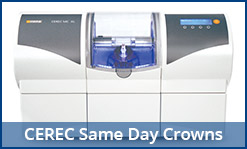Modern dentistry offers dental professionals and patients a wide variety of options that weren’t available just a few short years ago. One of those is porcelain dental material. This versatile material is used in a variety of appliances and restorations, including fillings, crowns, veneers, inlays and onlays, bridges and implants. When you think of the word “porcelain,” you may think of delicate piece of china. But modern dental porcelain is anything but delicate. In fact, it’s an extremely strong and durable material that typically lasts for many years. Here are some of the other advantages that this remarkable material provides to dentists and their patients:
- Porcelain can be made to very closely match the shade of the patient’s natural teeth. Although silver amalgam fillings and metal crowns are still available to patients, many people prefer porcelain because it’s much harder to detect than other materials. This is especially true for restorations or appliances that are visible when a person smiles. Put very simply, porcelain is a more attractive material than either metal or silver amalgam.
- Porcelain won’t change color. Silver amalgam, which has been used as a dental filling material for decades, turns very dark – almost black, in fact – after several years. Porcelain, on the other hand, will always remain its original color, which matches the shade of your natural teeth.
- Porcelain crowns provide an excellent way to anchor a patient’s bridge to neighboring teeth. This type of “anchored bridge,” is not removable by the patient and can be cared for by simply brushing and flossing as you normally would. The porcelain crowns that act as anchors on either side of the bridge – which also includes porcelain crowns – creates a seamless, barely noticeable dental appliance for a patient that needs to replace one or more missing teeth.
- When used as veneers, porcelain allows even the most dentally challenged patient to enjoy a beautiful, flawless smile. Veneers consist of a very thin layer of porcelain that is applied directly over the patient’s natural teeth. It’s often a great way to repair minor imperfections in teeth, such as cracks, chips, broken teeth, irregularly shaped teeth or badly stained teeth. The porcelain material not only looks good, it’s durable as well, often lasting as long as 10 years before the veneers need to be replaced.
To find out more about this remarkable dental material, talk to your dentist. You may end up being one of the countless dental patients who have benefited from all the advantages that dental porcelain has to offer.











